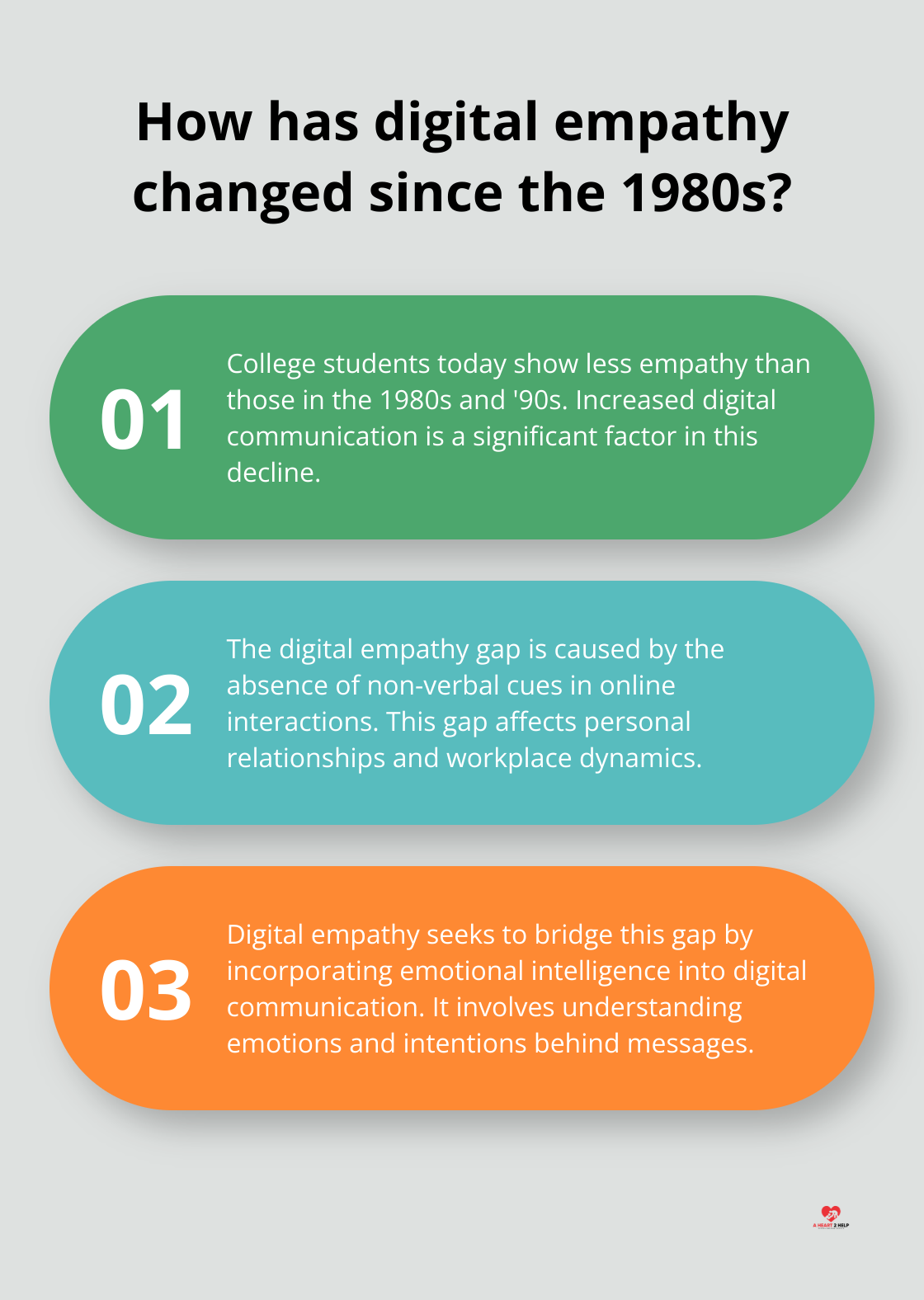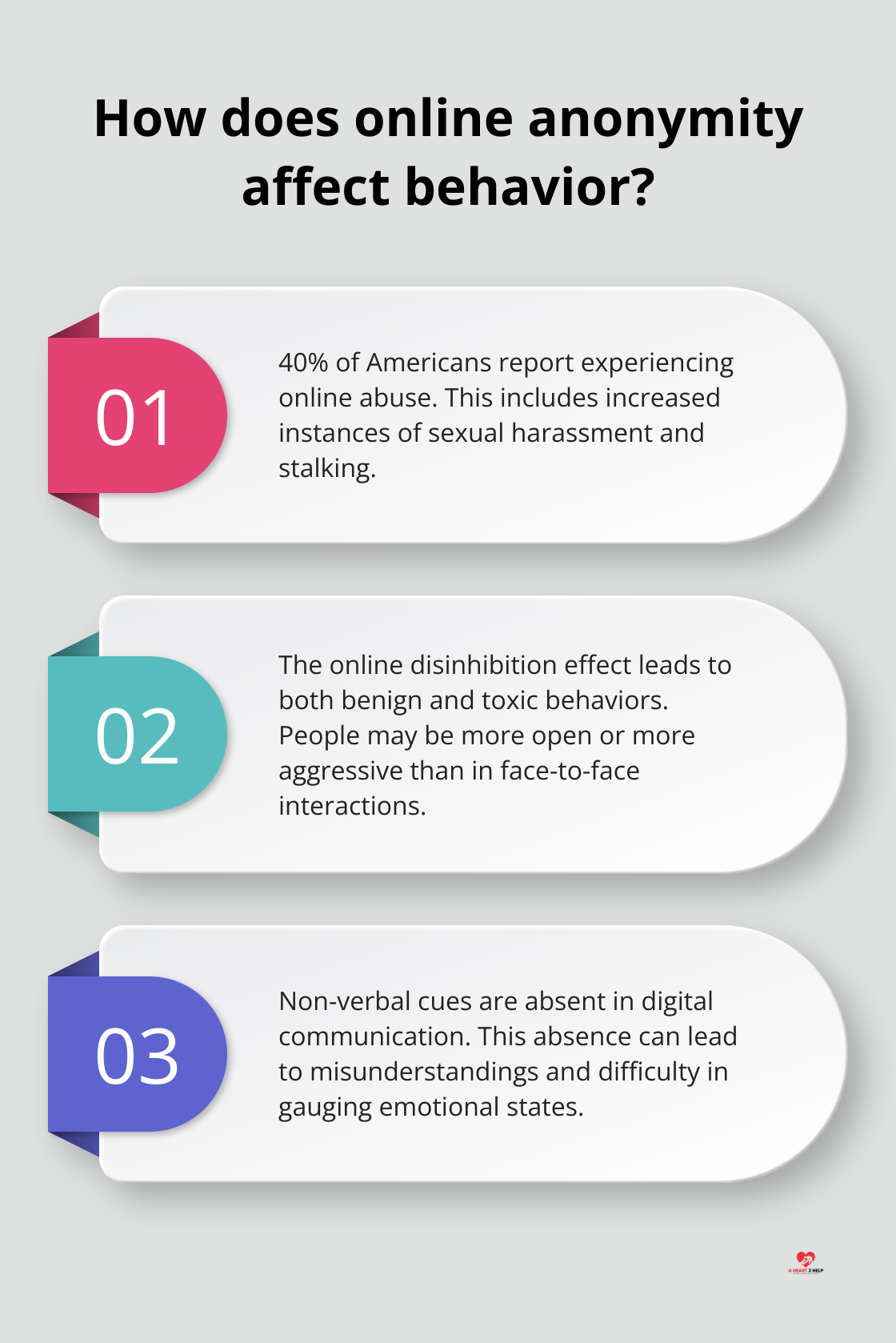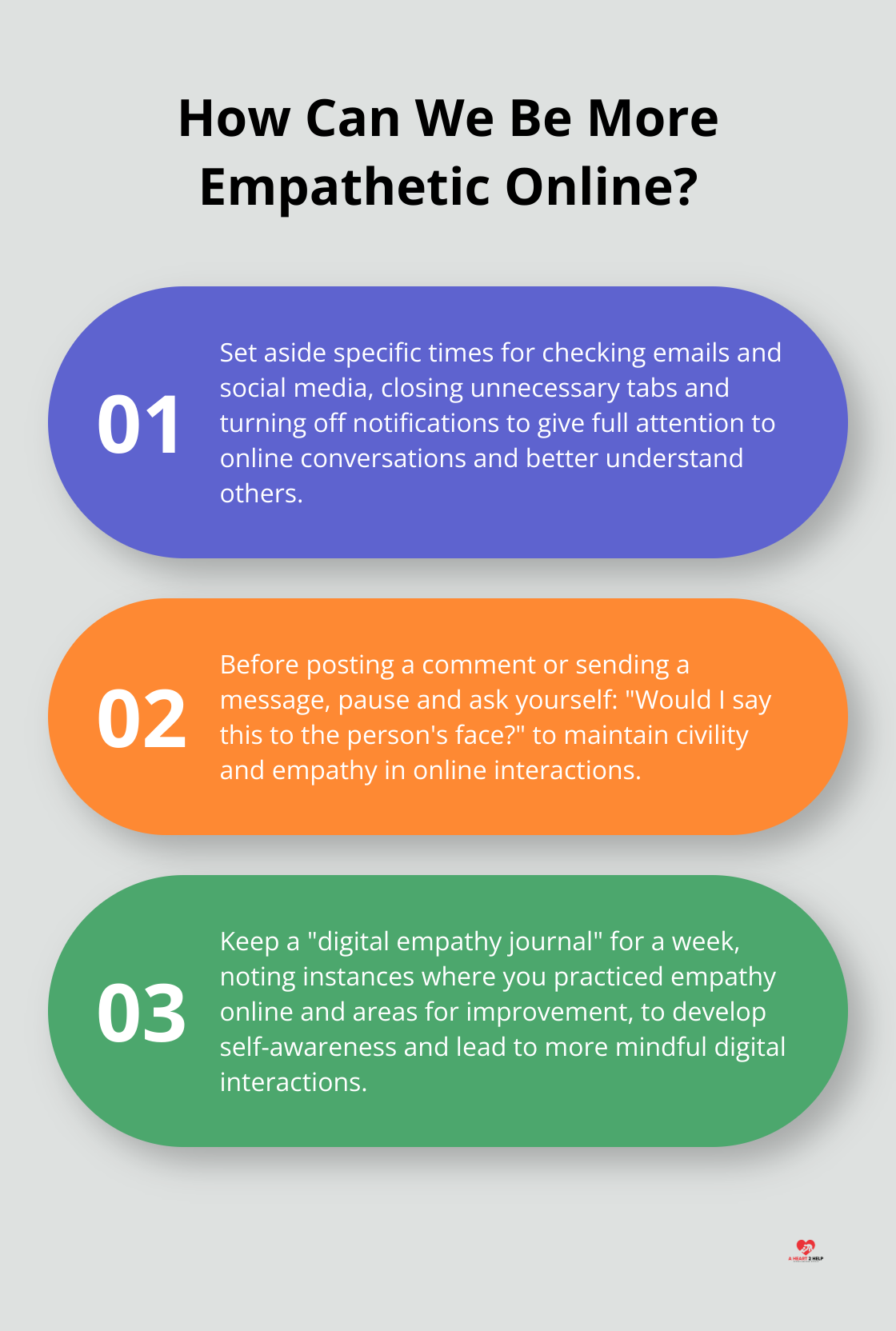In our hyper-connected world, digital empathy has become a vital skill. At A Heart 2 Help, we’ve seen how understanding and practicing empathy online can transform digital interactions.
As we spend more time in virtual spaces, learning to connect with others authentically through screens is essential. This post will explore how to cultivate digital empathy and why it matters for our online relationships and communities.
What Is Digital Empathy?
Defining Digital Empathy
Digital empathy is the ability to understand, share, and respond to others’ feelings and experiences in online environments. This skill transforms digital interactions, creating more meaningful connections in our increasingly virtual world.
The Digital Empathy Gap
In face-to-face interactions, we rely heavily on non-verbal cues like facial expressions, tone of voice, and body language to understand others’ emotions. These cues are often absent or limited in digital communication, creating what we call the “digital empathy gap.” Digital empathy seeks to bridge this gap by incorporating emotional intelligence and human connection into digital interactions.
A University of Michigan study shows that today’s college students are not as empathetic as college students of the 1980s and ’90s, with increased digital communication being a significant factor. This decline in empathy has real-world consequences, affecting everything from personal relationships to workplace dynamics.
Bridging the Gap
To bridge this gap, we need to actively cultivate digital empathy. This means we must go beyond simply reading messages to truly understand the emotions and intentions behind them. It involves taking the time to consider the context of a person’s situation and responding in a way that shows genuine care and understanding.
The Power of Digital Empathy
When we practice digital empathy, we create stronger, more authentic online relationships. This is important in a world where remote work, online education, and digital socializing are becoming the norm.
Practical Steps to Enhance Digital Empathy
- Read messages carefully and completely before responding.
- Use emojis and GIFs thoughtfully to convey tone and emotion.
- Ask clarifying questions if you’re unsure about someone’s meaning or intent.
- Take a moment to consider how your words might be interpreted before hitting send.
- Practice active listening in video calls by giving your full attention and providing verbal and non-verbal feedback.

These strategies can help create a more empathetic digital world, fostering understanding and connection across screens and distances. As we move forward, it’s essential to recognize the challenges that come with digital communication and how they impact our ability to empathize online.
Why Digital Empathy Is Hard
The Silent Treatment: Missing Non-Verbal Cues
Digital empathy presents unique challenges in practice. In face-to-face conversations, we rely on non-verbal cues. A slight frown, a raised eyebrow, or a change in tone can speak volumes. Online, these cues disappear. This absence leads to misunderstandings and makes it difficult to gauge the emotional state of the person we’re communicating with.
Albert Mehrabian, a famous psychologist, published studies about “message incongruence.” When we lose non-verbal components in digital interactions, we’re left with a fraction of the information we usually use to understand others.

To combat this, we must be more explicit in our digital communications. Use clear language to express emotions. Don’t assume the other person can read between the lines. If you’re frustrated, say so. If you’re excited, express it clearly. This extra effort helps bridge the empathy gap created by the lack of non-verbal cues.
The Mask of Anonymity: Online Disinhibition Effect
The internet often provides a shield of anonymity. This leads to what psychologists call the online disinhibition effect. People say things online that they would never say in person. This effect manifests in two ways: benign disinhibition (where people are more open and vulnerable) and toxic disinhibition (where individuals become rude or aggressive).
A 2021 Pew Research Center study found that 4 in 10 Americans say they’ve experienced abuse while online, with a larger share facing sexual harassment and stalking. This high percentage underscores the negative impact of online disinhibition.
To foster digital empathy, we must remember that there’s a real person behind every username. Before posting a comment or sending a message, pause and ask yourself: “Would I say this to the person’s face?” This simple question helps maintain civility and empathy in online interactions.
Information Overload: The Attention Deficit Challenge
We face a bombardment of information in the digital age. This constant influx leads to attention deficit and makes it harder to focus on individual interactions.
To combat this, we must practice mindful digital consumption. Set aside specific times for checking emails and social media. When engaging in online conversations, give them your full attention. Close unnecessary tabs and turn off notifications. Reducing distractions allows us to better focus on understanding and empathizing with others in our digital interactions.
As we navigate these challenges, it becomes clear that cultivating digital empathy requires active effort and conscious strategies. In the next section, we’ll explore practical techniques to enhance our digital empathy skills and create more meaningful online connections.
How to Build Digital Empathy
Digital empathy transforms online interactions. It’s essential for meaningful connections in our virtual world. Here are practical strategies to enhance your digital empathy:
Master Active Digital Listening
Active digital listening requires full engagement with content and thoughtful responses. When someone shares a post or sends a message, absorb it completely before you respond. Ask clarifying questions to understand their perspective. Practice paying attention to nonverbal cues and avoid making assumptions to become a better online listener. This approach demonstrates genuine interest and allows you to provide more meaningful support.
Select Words with Care
Words carry extra weight in digital communication due to the absence of non-verbal cues. Be mindful of your language and tone. Avoid using all caps (which can seem like shouting). Use emojis judiciously to convey tone, but don’t rely on them entirely. When discussing sensitive topics, take extra care with your word choice. If you disagree with someone’s opinion in a comment section, start with a phrase like “I see your point, but I have a different perspective” rather than launching into a direct contradiction.
Practice Digital Perspective-Taking
Digital perspective-taking is vital for digital empathy. This approach can prevent misunderstandings and foster more compassionate interactions. For example, if a colleague sends a terse email, consider that they might face pressure or personal issues before you assume intentional rudeness.
Foster Meaningful Online Interactions
Quality trumps quantity in digital interactions. Engage in thoughtful conversations instead of mindless scrolling and liking posts. Share personal experiences, offer genuine compliments, and provide support when others struggle. On platforms like LinkedIn, don’t just congratulate someone on a new job; ask what excites them most about their new role. These deeper interactions build stronger connections and a more empathetic online environment.
Develop Digital Self-Awareness
Reflect on your online behavior regularly. Do you contribute positively to digital spaces? Do your words align with your intentions? Keep a “digital empathy journal” for a week (noting instances where you practiced empathy online and areas for improvement). This self-reflection can lead to more mindful and empathetic digital interactions.

Final Thoughts
Digital empathy transforms our online interactions, creating meaningful connections in our hyper-connected world. We can bridge the empathy gap in digital spaces through active listening, careful word choice, and perspective-taking. These strategies enhance personal relationships and contribute to a more supportive online community.

Small changes in our digital communication can make a significant difference. We encourage you to pause before responding to messages and ask thoughtful questions in your online interactions. At A Heart 2 Help, we believe in the power of compassion and community support, connecting those in need with individuals ready to offer help.
Digital empathy allows us to create a more inclusive and understanding online environment. Every screen hides a real person with real emotions. Our care-app fosters a sense of community in the digital realm, extending kindness to all online interactions (one empathetic exchange at a time).

